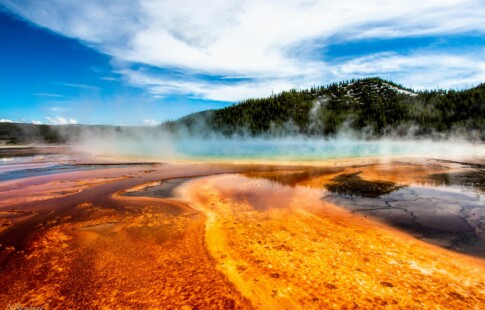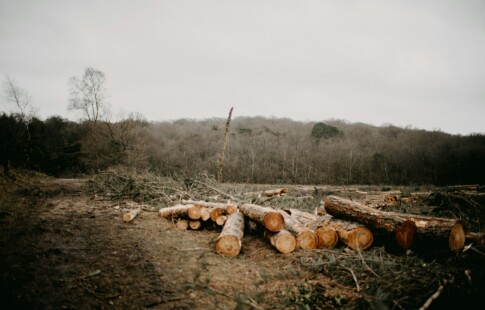
Stabilizing Coastlines With Beach Erosion Prevention
We are reader-supported. When you buy through links on our site, we may earn affiliate commission.
Rising sea levels and increased frequency of intense storms batter coastlines worldwide annually, wreaking havoc on fragile shoreline ecosystems and amassing billions of dollars in damages. To combat the impacts of climate change in coastal communities, governments have ramped up beach erosion prevention to stabilize the effects. Here is everything to know about the importance of this practice and the various environmental management plans to address this dire situation.
What Is Beach Erosion Prevention?
Strong waves and wind-driven ocean currents wash upon the shore and remove sediments and sand, dispersing them in deeper offshore waters and into inlets and bays. While some natural erosion processes are mild, various factors like major storm systems and human activities can worsen it.
Today, 29% of Americans live in coastal communities, an increase of 40 million people since 1960. Yet, beach erosion poses a severe risk to the environment, public safety, property and economies.
As such, population growth in coastal regions prone to inclement weather underscores the importance of doubling down on beach erosion prevention and emergency planning.
Coastal county governments implement dynamic preventative measures for beach erosion, depending on the needs of local beaches. Some common strategies include the following:
- Seawalls: Built structures that prevent strong waves from ever coming onto the shoreline
- Jetties: Constructed with stone, steel, concrete and other durable materials and extend out toward the ocean to prevent sand and sediment drift into ship channels
- Vegetation: Strategic planting of native coastal shrubs and seagrasses that help anchor sediments against waves
- Beach nourishment: A method of depositing sediment on the beach to build up dunes and expand the shoreline width
- Breakwaters: Fixed or floating offshore barriers built to protect shorelines from forceful wave energy
The initial costs of building seawalls, jetties, breakwaters, groins and other preventative structures are often high. Meanwhile, although nourishment projects are effective at widening the beach, they only prevent erosion temporarily and are costly undertakings.
Erosion Prevention Examples
The town of Oak Island, North Carolina, recently completed the second phase of its $20 million beach nourishment project that delivered 800,000 cubic yards of sand on the island’s beaches.
However, restoring habitats like seagrass beds, dune vegetation and mangrove forests is much more cost-effective and creates healthier shoreline ecosystems that support critical wildlife for coastal vitality and protection.
The Massachusetts Office of Coastal Zone Management (CZM) uses salt-tolerant plants with deep root systems as part of its beach erosion prevention strategy. Unlike built stabilization structures, vegetation absorbs and dispels wave energy and quickly accumulates sand, creating more prominent natural barriers.
Why Is Beach Erosion Prevention Important?
Efforts to thwart rampant global warming might be too little too late, as the effects are currently felt in various ways around the world. However, doing nothing isn’t an option when it comes to the implications of beach erosion — here’s why.
Environmental Degradation
Beach erosion can drive dramatic environmental changes, potentially causing widespread, irreversible damage to ecosystems.
For example, when Hurricane Andrew pummeled South Florida and the Florida Keys in 1996, the storm stripped 70% of the sand from barrier islands, leaving saltwater marshes exposed and vulnerable. Additionally, 80% of the oyster reefs behind the islands ended up covered in sand measuring 0.3 to 0.9 meters thick. The storm also destroyed 70 kilometers of dunes that protected the Everglades.
The loss of shoreline sediment endangers species that rely on the habitat for survival. For instance, onshore sand incubation levels determine green sea turtle hatchlings’ gender. As it stands, there are more female turtles than males, making mating increasingly difficult in the future.
One study found that the disappearance of beach-nesting habitats will be dire for three turtle species, three shorebirds and five kinds of sea birds by the 2030s. About 23% of brown pelican habitats will also become vulnerable due to erosion.
Social Risks
Beaches are highly-valuable natural environments that support recreational activities, community health and people’s livelihoods. In the United States, Americans visit the beach 400 million times annually.
Coastal outdoor activities often include swimming, surfing, fishing, boating, scuba diving and sunbathing — all of which become negatively affected by beach erosion. Therefore, beach erosion prevention is necessary to ensure ongoing recreational opportunities and well-being.
Research from the Barcelona Institute of Global Health recently found that 20 minutes of walking on a beach can significantly reduce depression and improve mood. As a result, the loss of coastlines and valuable cultural sites from beach erosion could further impact those living with anxiety and other mental health conditions.
Economic Loss
Of course, the economic loss from coastal erosion is astronomical. The U.S. loses about $500 million annually in coastal infrastructure damage and land degradation. Efforts to prevent coastal erosion — such as beach nourishment projects and stabilization structures — often cost another $150 million.
Coastal regions that depend on tourism economies might also decline with increasing beach erosion. As beaches become more degraded, tourists may stop visiting towns and spending money on restaurants and shops.
Commercial fisheries and aquaculture industries are also gravely affected by beach erosion. Beach erosion damages wetlands and water quality in aquatic ecosystems that serve as plant nurseries.
Finally, diminishing natural barriers increases property damage in coastal regions — especially in areas with disappearing mangrove forests. Healthy mangrove ecosystems can reduce wave energy by 66% and save up to $250 million in potential property, infrastructure and economic damages.
Beach Erosion Prevention Works to Protect Our Coastlines
Sandy beaches are critical for safeguarding the environment, society and the economy. With beach erosion prevention, we can prevent the redistribution of coastal sediment and ensure it stays onshore where it’s needed most.
Share on
Like what you read? Join other Environment.co readers!
Get the latest updates on our planet by subscribing to the Environment.co newsletter!
About the author

Jane Marsh
Starting from an early age, Jane Marsh loved all animals and became a budding environmentalist. Now, Jane works as the Editor-in-Chief of Environment.co where she covers topics related to climate policy, renewable energy, the food industry, and more.





